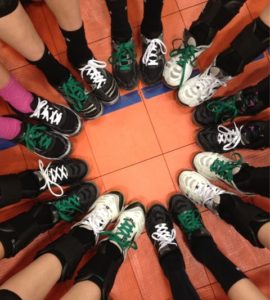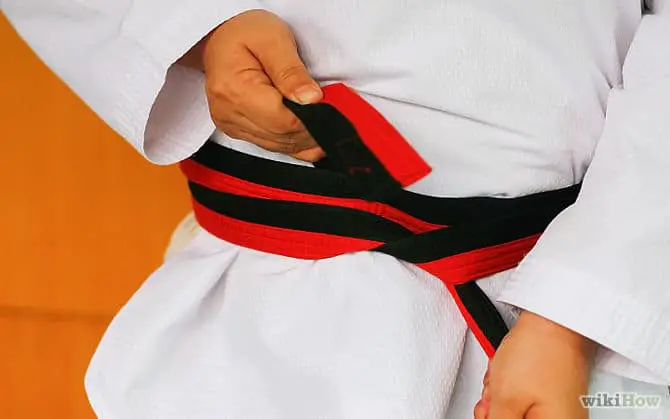The last time I went to the dentist’s office I, as many do, had conversation with the woman who was cleaning my teeth. We talked about my schoolwork, her children, and many other usual things. To my great interest she mentioned a karate organization that her son, Sam, had joined. In this organization, the teachers take very much responsibility not only for the improvement of their students’ self-defense skills, but also for the improvement of their daily conduct. In order to pass into the next-highest belt, each student has to earn 3 stripes: red, white, and blue. These colors represented successful grades, something the student had learned, and an act of kindness that the student has performed, respectively. Therefore, the promotion to each new belt represents an improvement of both a student’s skill and their general behavior. It was a truly intriguing system and it reminded me of the importance of visual reminders for sports.
*This post may contain affiliate links. As an Amazon Associate we earn from qualifying purchases.
Because of the intense standard of such a promotion, one can imagine the great significance of these belts, especially for a ten-year-old boy. For Sam, the belt represents both his great improvement and of course the possibility of more improvement with more stripes. It sparks his motivation and causes him to strive to improve himself on a daily basis. But if you think about it, almost anything could symbolize these virtues. The belt could just as easily be a bracelet with beads instead, or a progress board with stickers. As humans, we have the amazing ability to bestow a personal significance onto any inanimate object. With simple mind power, we can turn something old, worthless, or simple into something of extreme importance. In sports, athletes often use visual cues to assign meaning to something they see frequently and use it as a source of motivation both in practice and in a game. For example, hockey players will sometimes put a certain color of tape around their hockey stick. Every time the player sees that color, or more specifically THAT tape, they know that they must focus their attention on the game. It is an action reminder to stay mindful and calm even when tensions arise in a high-pressure game situation and it can serve as a stimulus for an athlete to engage in a switch thought. Switch thoughts help redirect a negative thought into a more productive thought quickly.
 Try this in your own sport: pick something that you see frequently, especially while practicing your sport. For a swimmer this could be a pair of goggles, or for a volleyball player the color of their laces, etc. Every time you see this trigger, say a short line to yourself that will remind you to stay present throughout your practice or game. This could be a single word, such as “refocus” or a phrase such as “my goal is to kick harder.” Try to forget the events of the day and let a feeling of meditative calm or determination wash over you for a short period of timed. After a while, you won’t have to actively think about saying these things to yourself because the symbol itself, whatever it may be, will help to trigger that feeling inside of you. Maybe you already experience this when you enter your gym or practice space. Entering that space, you know it’s time for business. Using a more accessible symbol, such as goggles or laces, will help you to reach that meditative state even when you’re at home or driving to a tournament. All you have to do is decide that your symbol carries significance, and by definition (along with a little practice!) it will.
Try this in your own sport: pick something that you see frequently, especially while practicing your sport. For a swimmer this could be a pair of goggles, or for a volleyball player the color of their laces, etc. Every time you see this trigger, say a short line to yourself that will remind you to stay present throughout your practice or game. This could be a single word, such as “refocus” or a phrase such as “my goal is to kick harder.” Try to forget the events of the day and let a feeling of meditative calm or determination wash over you for a short period of timed. After a while, you won’t have to actively think about saying these things to yourself because the symbol itself, whatever it may be, will help to trigger that feeling inside of you. Maybe you already experience this when you enter your gym or practice space. Entering that space, you know it’s time for business. Using a more accessible symbol, such as goggles or laces, will help you to reach that meditative state even when you’re at home or driving to a tournament. All you have to do is decide that your symbol carries significance, and by definition (along with a little practice!) it will.

